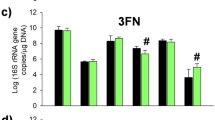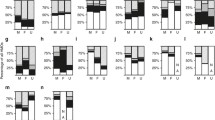Abstract
In this study, the content, structure and residual percentages of glycosaminoglycans (GAGs) in the feces of seven breastfed newborns after ingesting a known amount of milk were studied. A comparison was made with five newborns fed with formula milk. Characterization of GAGs from milk and feces samples was performed according to previous methodology. Compared to the ingested GAGs present in milk, residual feces GAGs of breastfed newborns were <0.4 %, contrary to formula milk fed children, where the residues were ~4 %. As a consequence, >99 % of human milk GAGs are utilized as opposed to ~96 % of formula milk. Hyaluronic acid utilization was found to be fairly similar contrary to chondroitin sulfate/dermatan sulfate and heparan sulfate, which were found to be ~10–18 times lower in formula milk fed children. Our new results further demonstrate that the elevated content of human milk GAGs passes undigested through the entire digestive system of newborns, possibly protecting the infant from infections. In the distal gastrointestinal tract, these complex macromolecules are catabolized by a cohort of bacterial enzymes and constituent monosaccharides/oligosaccharides utilized for further metabolic purposes potentially useful for bacteria metabolism or internalized by intestinal cells. Thanks to their elevated structural heterogeneity, milk GAGs are used differently depending on their distinct primary structure. Finally, a different utilization and availability was observed for human milk GAGs compared to formula milk due to their various composition and structural heterogeneity.


Similar content being viewed by others
References
Hamosh M.: Bioactive factors in human milk. Pediatr. Clin. N. Am. 48, 69–86 (2001)
Morrow A.L., Ruiz-Palacios, Jiang X.: Newburg DS. Human milk glycans that inhibit pathogen binding protect breast-fed infants against infectious diarrhea. J. Nutr. 135, 1304–1307 (2005)
Hanson L.A.: Feeding and infant development breast-feeding and immune function. Proc. Nutr. Soc. 66, 384–396 (2007)
Newburg D.S.: Neonatal protection by an innate immune system of human milk consisting of oligosaccharides and glycans. J. Anim. Sci. 87, 26–34 (2009)
Newburg D.S., Linhardt R.J., Ampofo S.A., Yolken R.H.: Human milk glycosaminoglycans inhibit HIV glycoprotein gp120 binding to its host cell CD4 receptor. J Nutrition. 125, 419–424 (1995)
Coppa G.V., Gabrielli O., Buzzega D., Zampini L., Galeazzi T., Maccari F., Bertino E., Volpi N.: Composition and structure elucidation of human milk glycosaminoglycans. Glycobiology. 21, 295–303 (2011)
Coppa G.V., Gabrielli O., Zampini L., Galeazzi T., Maccari F., Buzzega D., Galeotti F., Bertino E., Volpi N.: Glycosaminoglycan content in term and preterm milk during the first month of lactation. Neonatology. 101, 74–76 (2012)
Coppa G.V., Gabrielli O., Zampini L., Bertino E., Volpi N.: Human milk glycosaminoglycans as possible bioactive substances for the breastfed newborn. Breastfeed. Med. 8, 227 (2013)
Coscia A., Peila C., Bertino E., Coppa G.V., Moro G.E., Gabrielli O., Zampini L., Galeazzi T., Maccari F., Volpi N.: Effect of holder pasteurisation on human milk glycosaminoglycans. J. Pediatr. Gastroenterol. Nutr. 60, 127–130 (2015)
Jackson R.J., Busch S.J., Cardin A.D.: Glycosaminoglycans: molecular properties, protein interactions, and role in physiological processes. Physiol. Rev. 71, 481–539 (1991)
Gesslbauer B., Theuer M., Schweiger D., Adage T., Kungl A.J.: New targets for glycosaminoglycans and glycosaminoglycans as novel targets. Expert Rev Proteomics. 10, 77–95 (2013)
Gandhi N.S., Mancera R.L.: Heparin/heparan sulphate-based drugs. Drug Discov. Today. 15, 1058–1069 (2010)
Coppa GV, Facinelli B, Magi G, Marini E, Zampini L, Mantovani V, Galeazzi T, Padella L, Marchesiello RL, Santoro L, Coscia A, Peila C, Volpi N, Gabrielli O. Human Milk Glycosaminoglycans Inhibit in vitro the Adhesion of Escherichia coli and Salmonella fyris to Human Intestinal Cells. Ped Res In Press (2016).
Hill D.R., Rho H.K., Kessler S.P., Amin R., Homer C.R., McDonald C., Cowman M.K., de la Motte C.A.: Human milk hyaluronan enhances innate defense of the intestinal epithelium. J. Biolumin. Chemilumin. 288, 29090–29104 (2013)
Volpi N.: High-performance liquid chromatography and on-line mass spectrometry detection for the analysis of chondroitin sulfates/hyaluronan disaccharides derivatized with 2-aminoacridone. Anal. Biochem. 397, 12–23 (2010)
Volpi N., Galeotti F., Yang B., Linhardt R.J.: Analysis of glycosaminoglycan-derived, precolumn, 2-aminoacridone-labeled disaccharides with LC-fluorescence and LC-MS detection. Nat. Protoc. 9, 541–558 (2014)
Galeotti F., Volpi N.: Online reverse phase-high-performance liquid chromatography-fluorescence detection-electrospray ionization-mass spectrometry separation and characterization of heparan sulfate, heparin, and low-molecular weight-heparin disaccharides derivatized with 2-aminoacridone. Anal. Chem. 83, 6770–6777 (2011)
Barthe L., Woodley J., Lavit M., Przybylski C., Philibert C., Houin G.: In vitro intestinal degradation and absorption of chondroitin sulfate, a glycosaminoglycan drug. Arzneimittelforschung. 54, 286–292 (2004)
Larsen A.K., Lund D.P., Langer R., Folkman J.: Oral heparin results in the appearance of heparin fragments in the plasma of rats. Proc. Natl. Acad. Sci. U. S. A. 83, 2964–2968 (1986)
Dawes J., Hodson B.A., Pepper D.S.: The absorption, clearance and metabolic fate of dermatan sulphate administered to man. Studies using a radioiodinated derivative. Thromb Haemost. 62, 945–949 (1989)
Volpi N.: Oral bioavailability of chondroitin sulfate (Condrosulf) and its constituents in healthy male volunteers. Osteoarthr. Cartil. 10, 768–777 (2002)
Volpi N.: Oral absorption and bioavailability of ichthyic origin chondroitin sulfate in healthy male volunteers. Osteoarthr. Cartil. 11, 433–441 (2003)
Du J., White N., Eddington N.D.: The bioavailability and pharmacokinetics of glucosamine hydrochloride and chondroitin sulfate after oral and intravenous single dose administration in the horse. Biopharm. Drug Dispos. 25, 109–116 (2004)
Ahn M.Y., Shin K.H., Kim D.H., Jung E.A., Toida T., Linhardt R.J., Kim Y.S.: Characterization of a Bacteroides species from human intestine that degrades glycosaminoglycans. Can. J. Microbiol. 44, 423–429 (1998)
Hong S.W., Kim B.T., Shin H.Y., Kim W.S., Lee K.S., Kim Y.S., Kim D.H.: Purification and characterization of novel chondroitin ABC and AC lyases from Bacteroides stercoris HJ-15, a human intestinal anaerobic bacterium. Eur. J. Biochem. 269, 2934–2940 (2002)
Shaya D., Hahn B.S., Park N.Y., Sim J.S., Kim Y.S., Cygler M.: Characterization of chondroitin sulfate lyase ABC from Bacteroides thetaiotaomicron WAL2926. Biochemistry. 47, 6650–6661 (2008)
Hyun Y.J., Lee K.S., Kim D.H.: Cloning, expression and characterization of acharan sulfate-degrading heparin lyase II from Bacteroides stercoris HJ-15. J. Appl. Microbiol. 108, 226–235 (2010)
Hyun Y.J., Lee J.H., Kim D.H.: Cloning, overexpression, and characterization of recombinant heparinase III from Bacteroides stercoris HJ-15. Appl. Microbiol. Biotechnol. 86, 879–890 (2010)
Hyun Y.J., Jung I.H., Kim D.H.: Expression of heparinase I of Bacteroides stercoris HJ-15 and its degradation tendency toward heparin-like glycosaminoglycans. Carbohydr. Res. 359, 37–43 (2012)
Ulmer J.E., Vilén E.M., Namburi R.B., Benjdia A., Beneteau J., Malleron A., Bonnaffé D., Driguez P.A., Descroix K., Lassalle G., Le Narvor C., Sandström C., Spillmann D., Berteau O.: Characterization of Glycosaminoglycan (GAG) Sulfatases from the Human Gut Symbiont Bacteroides thetaiotaomicron Reveals the First GAG-specific Bacterial Endosulfatase. J. Biolumin. Chemilumin. 289, 24289–24303 (2014)
Benno Y., Sawada K., Mitsuoka T.: The intestinal microflora of infants: composition of fecal flora in breast-fed and bottle-fed infants. Microbiol. Immunol. 28, 975–986 (1984)
Balmer S.E., Wharton B.A.: Diet and faecal flora in the newborn: breast milk and infant formula. Arch. Dis. Child. 64, 1672–1677 (1989)
Volpi N., Gabrielli O., Carlucci A., Zampini L., Santoro L., Padella L., Marchesello R.L., Maccari F., Coppa G.V.: Human milk glycosaminoglycans in feces of breastfed newborns: preliminary structural elucidation and possible biological role. Breastfeed. Med. 9, 105–106 (2014)
Simon-Assmann P., Kedinger M., De Arcangelis A., Rousseau V., Simo P.: Extracellular matrix components in intestinal development. Experientia. 51, 883–900 (1995)
Jandik K.A., Kruep D., Cartier M., Linhardt R.J.: Accelerated stability studies of heparin. J. Pharm. Sci. 85, 45–51 (1996)
Volpi N., Mucci A., Schenetti L.: Stability studies of chondroitin sulfate. Carbohydr. Res. 315, 345–349 (1999)
Contributors
N.V. developed the applied methodologies. F.M., V.M., L.Z., T.G. and F.G. performed the experimental procedures and analyses. A.C. collected the feces samples. N.V., G.V.C. and O.G. designed and developed the experimental design, performed data analysis and wrote the manuscript.
All authors reviewed and approved the study.
Author information
Authors and Affiliations
Corresponding author
Ethics declarations
Conflicts of interest
We declare that we have no conflicts of interest.
Grant support
None.
Rights and permissions
About this article
Cite this article
Maccari, F., Mantovani, V., Gabrielli, O. et al. Metabolic fate of milk glycosaminoglycans in breastfed and formula fed newborns. Glycoconj J 33, 181–188 (2016). https://doi.org/10.1007/s10719-016-9655-5
Received:
Revised:
Accepted:
Published:
Issue Date:
DOI: https://doi.org/10.1007/s10719-016-9655-5




